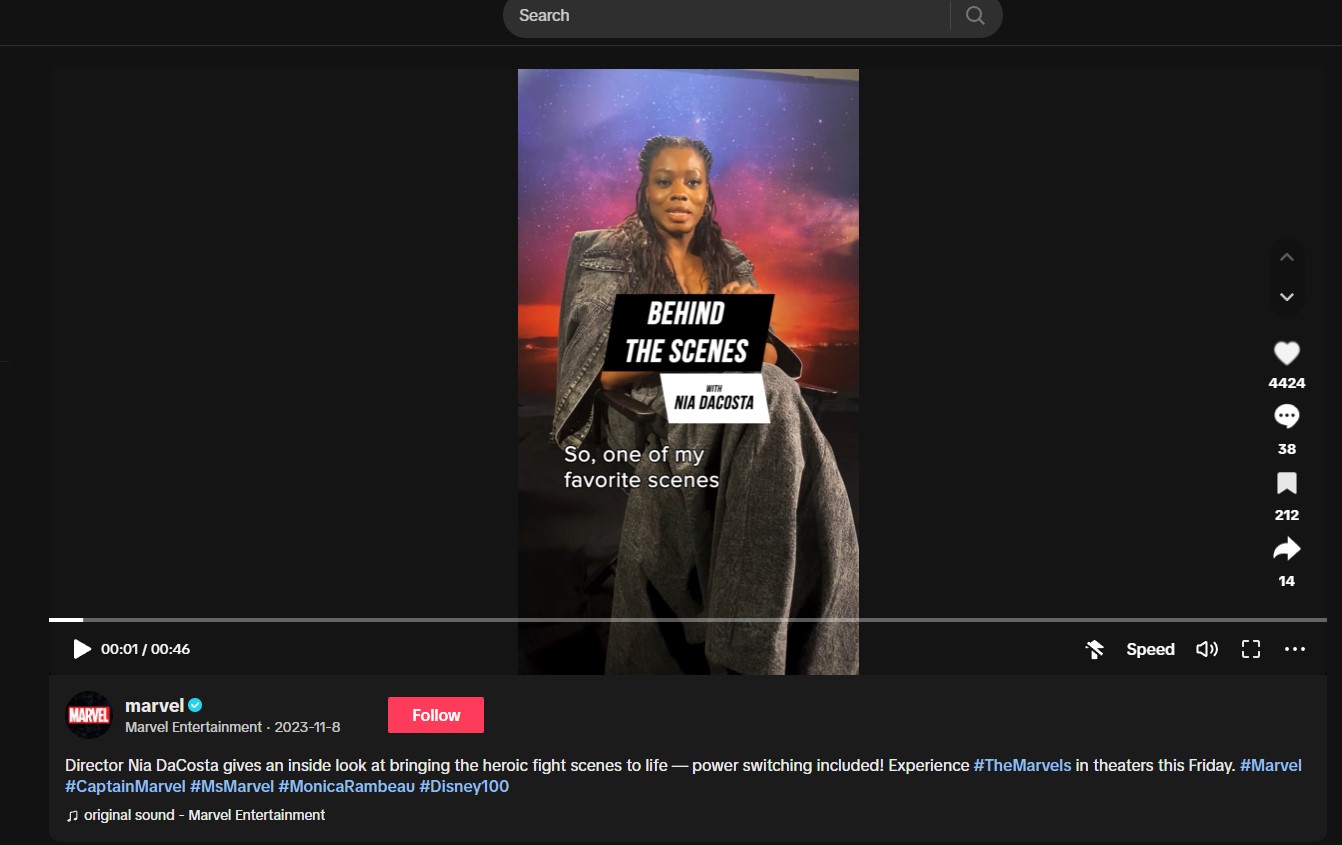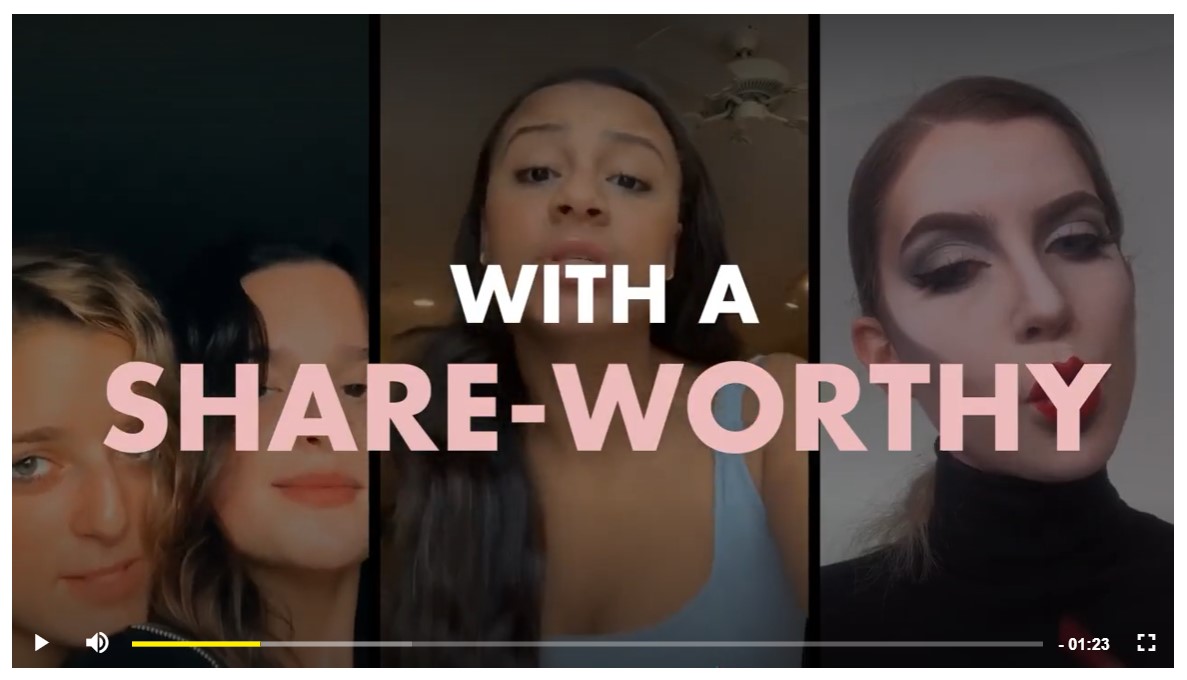Video marketing is a powerful tool that allows brands to connect with audiences in new and exciting ways. But, with 91% of marketers using video content, the pressure to create timely, relevant and unique content that will draw consumers away from competitors is huge. A half-hearted effort simply won’t do for video marketing in 2024. So, how can you get noticed? Let’s go.
Video Marketing Stats You Should Know for 2024
Video marketing isn’t new. But it’s constantly evolving and adapting to fit consumer demands and new platforms, so it’s important to keep up. The best way to start 2024, is to familiarise yourself with all the latest statistics and get to grips with just how important video marketing actually is.
- The digital video advertising market is growing rapidly, with spending expected to reach $120 billion by 2024.
- People consume 17 hours of video content on average per week, with 52% more likely to share video content than any other type of content.
- 75% of viewers watch short-form video content on their mobile devices. A recent study also revealed that 75% of respondents prefer to watch videos horizontally. This is likely because people prefer to scroll through their social feeds while holding their phones vertically, making it easier to consume content.
- Instagram users are spending a total of 6 million hours a day watching Reels on the platform. While only 19.67 of brands used Reels in 2022, this increased to 30.85% in 2023 and looks set to rise again in 2024.
- TikTok users watch 1 million videos on the app every day, with brands posting on the platform about 16 times per month on average. What’s more, 50% of Gen Z pick up their phones and look up information on TikTok instead of the now traditional Googling, which is undoubtedly a game-changing trend.
- YouTube users view a whopping 1 billion hours of video each day. That accounts for around 5 billion YouTube videos being watched each day. Fun fact. Indian record label T-Series is the most-subscribed channel, with over 254 million subscribers as of December 2023. The Indian record label and film production powerhouse is successful thanks to their breadth of content (including Bollywood hits), level of quality, frequency of posting and legacy status.
- YouTube is first on the list ranking the top video marketing platforms in 2023. It is used by 90% of brands. Facebook follows in second place, with 86%. More than 8 billion videos are posted to Facebook daily.
How to Nail Your Video Marketing Strategy
Video marketing is huge, as you can see. But what can you do to stay on trend, stand out from the crowd and meet consumer demands? Here are our top tips.
Offer a Form of Escapism
According to a HubSpot survey, 32.8% of respondents watch video content to ‘relax and unwind’ while 26.3% want to ‘laugh or be entertained’ and 6.8% want a form of escapism. So, when the world is a lot (which is basically every day), why not provide your audience with a funny distraction?
Many brands win by welcoming humour into their video marketing strategy. Innocent Drinks embraces ‘funny’ on a daily basis, with the brand’s TikTok channel loaded up with short, snappy yet entertaining video clips like this. Not only does this sort of imaginative content rack up millions of likes, but it gets great levels of engagement too.
@innocentdrinks We think our boss might’ve found our TikTok account. #almostthere #dontbesurprised #buysmoothies ♬ Almost there – 👀
Top Tip: Don’t spend hours creating long video content for entertainment purposes. While this might be what you think you should do, people are more comfortable with short, snappy videos that instantly entertain. The ideal length for a funny TikTok, for example, is between 21-34 seconds.
Embrace Product Videos and Teasers
90% say that videos help them make buying decisions and with 33% of marketers stating that product videos produce the best ROI over other types of videos, it’s time to showcase your offerings. Product demo videos are a great start. Or, you might want to film customers after using your products and consolidate these findings into one video to share on social media handles. Positive vibes could result in FOMO, encouraging people to filter down the sales funnel.
PlayStation is always bringing new game additions and releases to life through video in a way that can’t be explained in words. Seeing characters in a gameplay setting is an effective way to excite, entertain and engage viewers.

Top Tip: People scroll up to three miles a year on social media. Crazy isn’t it? So, you need a way to stop them in their tracks. The best way to do this is to post teaser video content to their feed. This should be short and punchy. You can then provide a link to longer content on a branded channel like YouTube. This will encourage further brand interaction, subscriptions, comments and will give people a choice over what content they want to consume. Don’t forget to include important information in all video content or captions, including launch dates.
Support Consumer Needs
Surveys have shown that 82% of Gen Z consumers would trust a company more if it uses images of real customers in its advertising. So, find out what your audience wants through extensive consumer and data research and respond to it in your video content. Dove is an advocate for Real Beauty and has included people of all shapes and sizes in their promotional video content throughout the years. Most recently, the brand has focussed on ‘black hair representation in gaming.’

As part of the Code My Crown campaign, Dove has created a free guide to develop realistic black hair textures for avatars used in gaming. The work rests on research that found that 85% of black gamers think video games poorly depict natural hair and 74% of developers want to better represent textured hair. Their mission has been explained on social channels using descriptive content. The campaign video is awesome because:
- It’s loaded with statistics and sets out the problem of black hair representation clearly. All essential information is captioned.
- The video has been stylized in a gaming format to make it relatable and gaming language such as ‘isn’t it time to level up?’ is used.
- It features interviews and testimonials from black gaming enthusiasts as well a black creators such as 3D artists.
- USPs are highlighted. The video states clearly that Dove has launched ‘the world’s first free guide for developing black hair textures and protective styles in video games.’
- The slogan, ‘Let’s CHANGE Beauty’ is powerful.
- All kinds of skin tones and black hair types are featured for diversity.
This is a product video but it’s also a campaign video based around corporate social responsibility. It fits perfectly with Dove’s brand ethos and responds to consumer feedback brilliantly. Posting product links alongside video content on social media is also a great way to direct consumers to where they need to be. Don’t forget those all-important calls-to-action.
Behind-the-Scenes Videos
90% of consumers report that authenticity is an important factor in deciding which brands they like. What’s more, Millennials and Gen Z, in particular, prefer brands that are ‘real and organic’ as opposed to ‘perfect and well-packaged.’ So, why not embrace this notion and produce behind-the-scenes videos? This draws consumers into your world and helps to form a stronger connection. Everyone loves a blooper and some comical, exclusive or downright bizarre content that would otherwise have gone unseen is sure to delight.
Marvel’s most popular content on its TikTok is typically behind-the-scenes video of the Marvel office or productions. Marvel also likes to post behind-the-scenes footage which includes interviews with cast and crew members. Check out this interview with Director Nia DaCosta as she gives an inside look at bringing the heroic fight scenes to life in new movie The Marvels – power switching included. This video alone racked up over 57K likes.
Top Tip: Make it known that your video content is behind-the-scenes. Label it, make the video font stand out and write about it in the captions. This generates a sense of excitement for viewers. 
User-Generated Content
It’s one thing to create video content by yourself. But how about asking your audience to do it for you? There are loads of ways to generate video content from users including:
- Creating your own branded TikTok challenge. L.F Cosmetics became a TikTok trendsetter when they created the most-viral campaign ever on TikTok – the #eyeslipsface challenge. This contributed nearly five million user-generated videos and became a true pop culture moment with celebrities like Lizzo, Ellen and Reese Witherspoon joining in unpaid. Indeed, the #eyeslipsface challenge hashtag has received 10.3 billion views on the platform and continues to attract user-generated videos.

Top Tip: Monitor brand mentions using social listening tools. From there, you can build up a hub of creators, including micro influencers who have mentioned your products and who might be happy to arrange a continued collaboration.
Go Live on Multiple Platforms
When it comes to video content marketing, the options are almost endless. But with YouTube, Facebook, Twitter and Instagram offering the possibility to do live streams on their platform, this is an opportunity worth seizing.
Live videos are great for:
- Showing your authenticity and introducing key team members
- Going behind the scenes in a less ‘official’ or ‘staged’ way
- Hosting Q&A sessions
- Answering customer questions in real-time
- Making official announcements
- Giving more information about a particular product
- Showing how your clients use products
- Entertaining your audience
- Introducing a celebrity or brand collaboration
Live streams help to boost engagement and have the potential to provide consumer insights for brand development.
Videos Metrics – Why They Matter
Keeping an eye on the metrics of any video campaign is a must as it’ll help you to know what’s working and what’s not. In terms of metrics that marketers felt mattered to them, 63% said the number of video views was the most important. If your video is getting no views, there might be a problem with video topic selection, video SEO or a breach of platform guidelines. This will need investigating.
Other metrics that matter include audience engagement, leads/click-throughs, brand awareness, play rate, watch time/customer retention, social shares and bottom line sales/conversions. If you’re running a video ad campaign with a call-to-action button, the number of clicks and click-through rate also need measuring.
If you need help with your video marketing in 2024, drop me a message here.